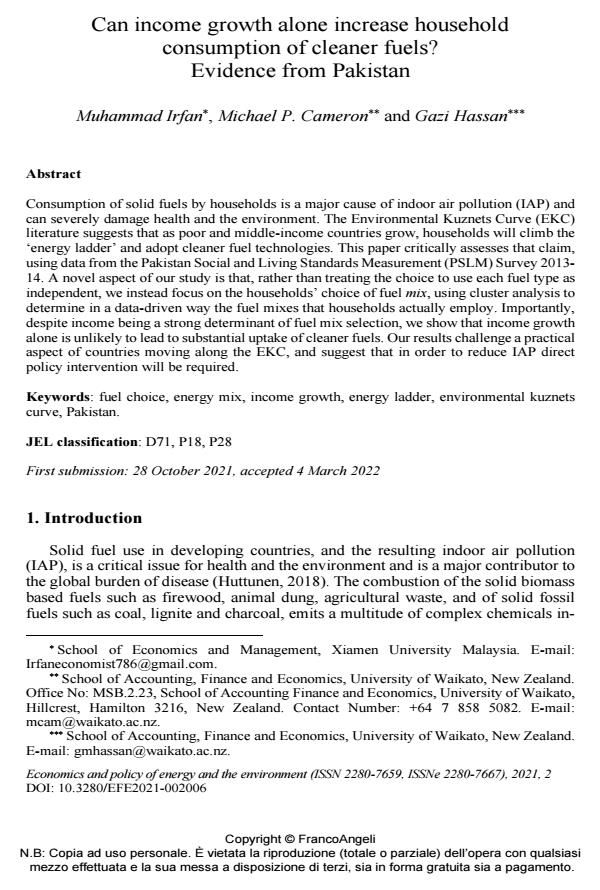Can income growth alone increase household consumption of cleaner fuels? Evidence from Pakistan
Titolo Rivista ECONOMICS AND POLICY OF ENERGY AND THE ENVIRONMENT
Autori/Curatori Muhammad Irfan, Michael P. Cameron, Gazi Hassan
Anno di pubblicazione 2022 Fascicolo 2021/2
Lingua Inglese Numero pagine 26 P. 121-146 Dimensione file 276 KB
DOI 10.3280/EFE2021-002006
Il DOI è il codice a barre della proprietà intellettuale: per saperne di più
clicca qui
Qui sotto puoi vedere in anteprima la prima pagina di questo articolo.
Se questo articolo ti interessa, lo puoi acquistare (e scaricare in formato pdf) seguendo le facili indicazioni per acquistare il download credit. Acquista Download Credits per scaricare questo Articolo in formato PDF

FrancoAngeli è membro della Publishers International Linking Association, Inc (PILA)associazione indipendente e non profit per facilitare (attraverso i servizi tecnologici implementati da CrossRef.org) l’accesso degli studiosi ai contenuti digitali nelle pubblicazioni professionali e scientifiche
Consumption of solid fuels by households is a major cause of indoor air pollution (IAP) and can severely damage health and the environment. The Environmental Kuznets Curve (EKC) literature suggests that as poor and middle-income countries grow, households will climb the ‘energy ladder’ and adopt cleaner fuel technologies. This paper critically assesses that claim, using data from the Pakistan Social and Living Standards Measurement (PSLM) Survey 2013- 14. A novel aspect of our study is that, rather than treating the choice to use each fuel type as independent, we instead focus on the households’ choice of fuel mix, using cluster analysis to determine in a data-driven way the fuel mixes that households actually employ. Importantly, despite income being a strong determinant of fuel mix selection, we show that income growth alone is unlikely to lead to substantial uptake of cleaner fuels. Our results challenge a practical aspect of countries moving along the EKC, and suggest that in order to reduce IAP direct policy intervention will be required.
Parole chiave:fuel choice, energy mix, income growth, energy ladder, environmental kuznets curve, Pakistan.
Jel codes:D71, P18, P28
- Household Adoption of Solar Energy in Pakistan: Insights from Nationally Representative Data for Achieving Seventh Sustainable Development Goal Muhammad Irfan, Michael Cameron, Waqar Akram, in Journal of Energy and Development /2025
DOI: 10.56476/jed.v50i1.71
Muhammad Irfan, Michael P. Cameron, Gazi Hassan, Can income growth alone increase household consumption of cleaner fuels? Evidence from Pakistan in "ECONOMICS AND POLICY OF ENERGY AND THE ENVIRONMENT" 2/2021, pp 121-146, DOI: 10.3280/EFE2021-002006